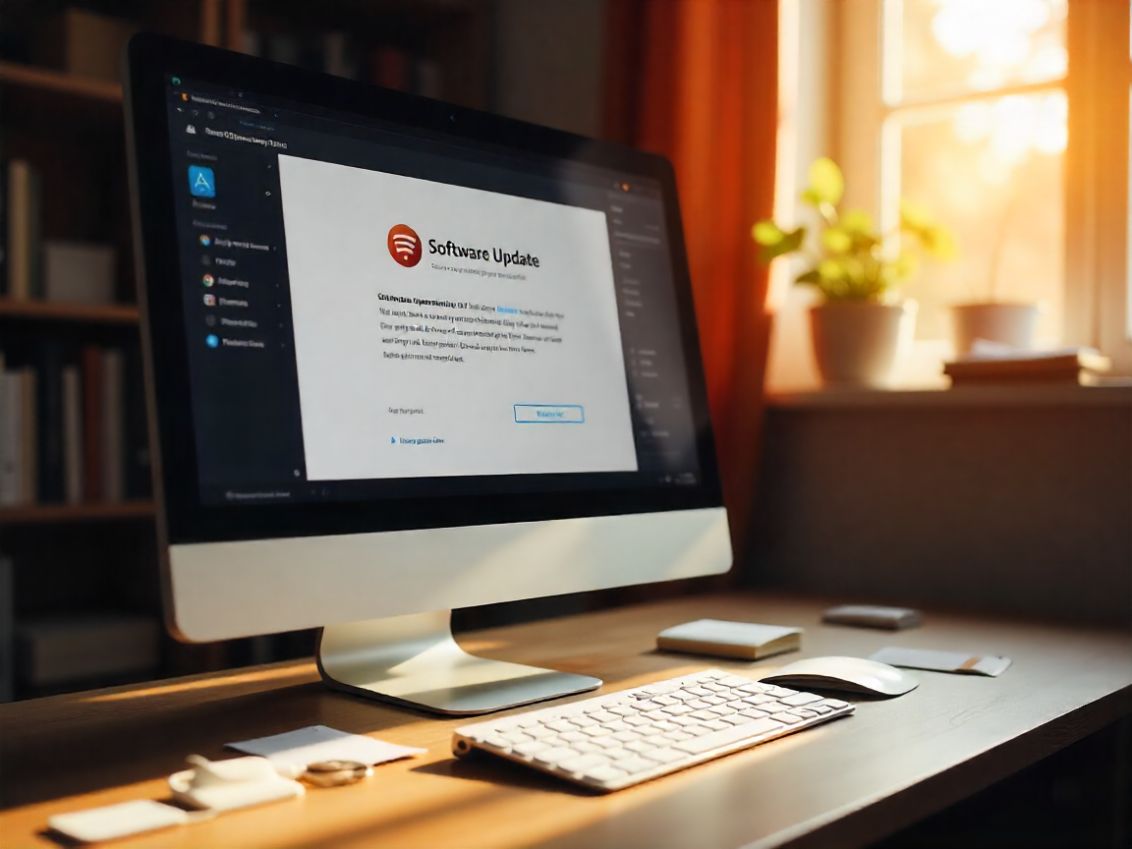Now Reading: Deprecated Software Meaning: Navigating the Digital Transition
-
01
Deprecated Software Meaning: Navigating the Digital Transition
Deprecated Software Meaning: Navigating the Digital Transition

A few months ago, while working on a project for one of my clients, I received an unexpected message. The software they had been using for years was “deprecated.”
At first, I thought it was a technical glitch or some weird error. But no, it was a legitimate warning: the software was no longer supported and would soon be phased out.
It got me thinking—how often do we really understand terms like “deprecated” when we hear them? We know they’re important, but are we aware of their implications on our work or business?
If you’re like me, you might have shrugged off the term before, but the truth is, it’s vital to understand Deprecated Software Meaning and how it affects your workflow, your tech stack, and your overall productivity.
Let’s break down what deprecated software means, why it matters, and how you can avoid the pitfalls that come with using outdated systems.
What Exactly Does Deprecated Software Mean?
In simple terms, “deprecated” refers to software, features, or technologies that are no longer supported or recommended for use. But that doesn’t mean the software immediately stops working; rather, it’s no longer being updated, patched, or maintained by the developers.
When software is deprecated, the developers usually provide warnings and suggestions to migrate to newer, supported versions. In some cases, the software might continue to function for a while, as it hasn’t become obsolete yet but eventually, it could become unstable, incompatible with newer systems, or even completely obsolete.
You might be wondering, “Why would developers do this?” The short answer: progress. As new technologies evolve, old systems or software often become inefficient or incompatible with newer solutions. Developers deprecate them to push users toward more secure, efficient, and feature-rich alternatives.
Why Do Developers Deprecate Software?

Credit: Freepik
The deprecation of software isn’t just an arbitrary decision; there are valid reasons behind it. Here are a few key motivations for why software gets deprecated:
- Security Concerns: Older software versions may have vulnerabilities that cannot be easily patched, making them risky to use. Developers deprecate these versions to encourage users to switch to safer alternatives.
- Incompatibility with Newer Technologies: As technology evolves, older software becomes incompatible with new hardware, operating systems, or other tools. This creates a need for newer versions or entirely different software.
- Better Alternatives: Sometimes, software is deprecated because there’s simply a better option available. If a new version or a new program provides significantly enhanced features or performance, developers may phase out the older version.
- Resource Allocation: Maintaining old software requires time, effort, and resources. By deprecating software that is no longer widely used or supported, developers can allocate resources to building new, innovative solutions.
How to Identify Deprecated Software
You might be wondering: how can you tell if the software you’re using is deprecated? Here are a few signs that your tools might be on the chopping block:
- No Updates or Patches: If the software hasn’t received updates or security patches in a long time, it’s likely that it’s been deprecated. Check the developer’s website or official announcements for any updates.
- End-of-Life Announcements: Developers often announce the end-of-life (EOL) of software, signaling that the software will no longer be supported. If you see a notice like this, it’s a clear sign to start planning your migration.
- Compatibility Issues: If the software starts having compatibility issues with new operating systems or hardware, this could mean it’s outdated and might soon be deprecated.
- Lack of Support: If you’re finding it hard to get help with troubleshooting or technical support, that’s another indicator that the software is on its way out.
What Happens When You Continue Using Deprecated Software?

Credit: Freepik
The biggest concern with continuing to use deprecated software is security. As mentioned earlier, deprecated software no longer receives updates or security patches. This makes your system vulnerable to attacks, bugs, and performance issues. Over time, deprecated software may become slower, crash more often, or even stop functioning altogether.
Additionally, using outdated software could create compatibility problems. If your software doesn’t play nice with newer technologies, you might face integration issues, limiting your ability to use other tools or systems. This can lead to inefficiencies, frustration, and lost productivity.
How to Handle Deprecated Software: What Should You Do?
So, what should you do if you find yourself using deprecated software? Don’t panic—there are several proactive steps you can take to minimize risks and move forward:
- Check for Alternatives: Look for newer software options that provide similar or better functionality. Many deprecated software versions have been replaced by more secure, efficient tools that will make your work smoother and more reliable.
- Update to the Latest Version: If the software is only partially deprecated, updating to the latest version might be a simple fix. Developers often phase out old features while introducing better ones in newer releases. Make sure you’re using the most up-to-date version available.
- Plan for Migration: If you’re dealing with software that’s been fully deprecated, it’s time to plan a migration strategy. Migrate to newer, supported systems gradually, ensuring that your workflow remains uninterrupted. Take your time to understand the new system, train your team, and integrate new solutions.
- Consult with a Professional: If you’re unsure about how to handle deprecated software, consider consulting a professional. A digital strategist or IT consultant can help you evaluate your current tools and recommend the best course of action to transition to better software.
FAQ: Everything You Need to Know About Deprecated Software
What does it mean when software is deprecated?
Deprecated software is no longer being supported, updated, or maintained by developers. While it may continue to work for some time, it becomes less secure and efficient over time.
Why do developers deprecate software?
Software gets deprecated to promote security, compatibility with newer technologies, better alternatives, and efficient resource allocation by developers.
How can I tell if my software is deprecated?
Signs include the absence of updates, end-of-life announcements, compatibility issues, or lack of support from the developer.
What should I do if I’m using deprecated software?
Look for newer alternatives, update to the latest version if available, plan a migration to modern software, or consult with an expert to make the switch smoothly.
The Bottom Line: Moving Forward with Modern Solutions
In the fast-evolving digital world, keeping up with technology is key to staying secure and efficient. Deprecated software can be a real headache, but with the right knowledge and planning, you can transition smoothly to more modern, secure systems.
Don’t wait for your outdated software to cause you problems—take action now, and you’ll be well ahead of the curve in maintaining your workflow and digital security.
So, take a moment to evaluate your tools, do some research, and embrace the future of technology. Whether you’re updating a single program or making a major system change, the benefits of keeping up with new software will far outweigh the risks of sticking with the outdated stuff.













